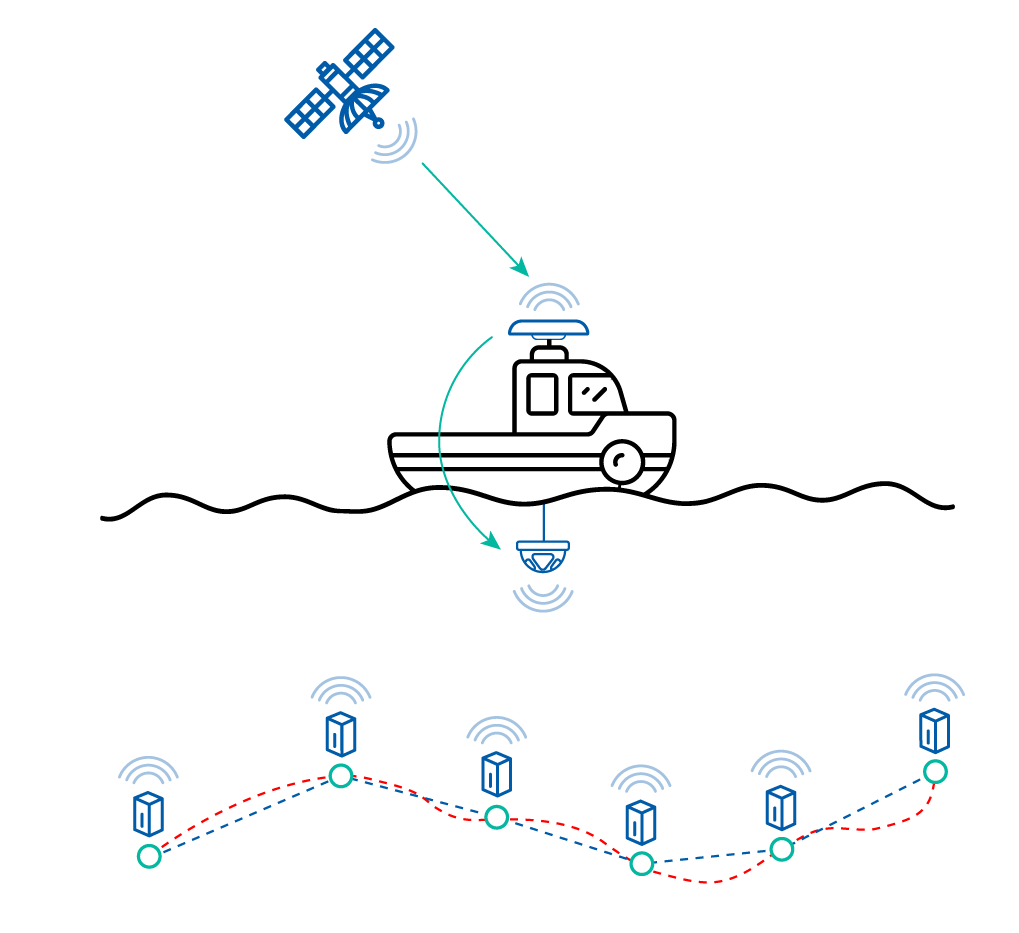USBL
Share:
What is the definition of USBL?
Stands for ultra-short baseline. USBL is a positioning technology that detects acoustic (sound) signals via a hydrophone array to calculate the range and direction to the acoustic source, based on the reception time of the soundwave at each hydrophone.
Read the full article “Untangling USBL – comparing the benefits of USBL-squared (USBL2) with classic and inverted USBL“.

Image depicting classic USBL operation, where a transducer at the surface vessel emits an acoustic ping.
- Transponders that detect the ping, emit a ping back.
- The return ping is processed to provide range and direction information of the transponder.
- Position is attained at each ping only, so motion data between pings is not logged.
In the example, the green circles are the pings, the red line is the [unknown] actual path of motion, the blue line is the estimated travel path. Heading of the tracked object is relatively unknown.
